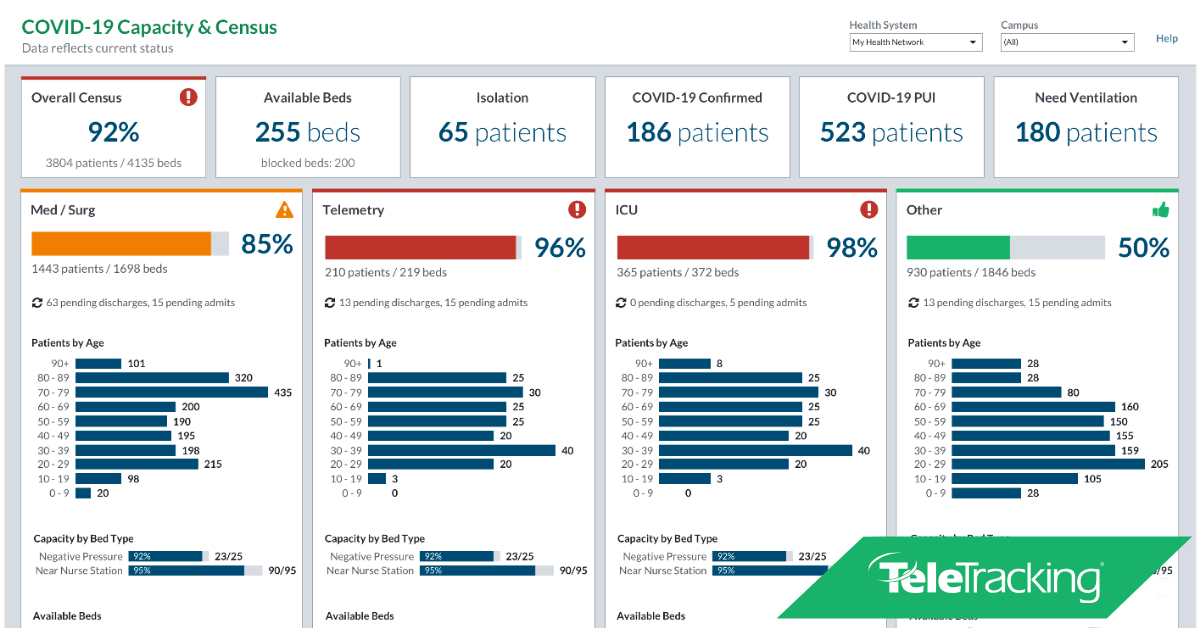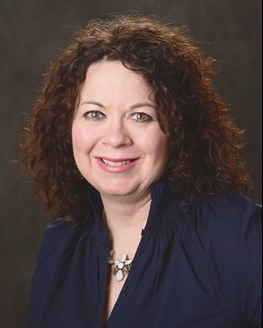The Power of Nursing Combined with the Power of Technology
Nursing is a profession of selflessness. We give not to receive but to serve those in need.
I have worked at the bedside and held patient’s hands during their most difficult times, and now I’m working side-by-side with healthcare professionals serving their communities and caring for patients during the COVID-19 outbreak through my work as a clinical advisor with TeleTracking.
For close to three decades, TeleTracking has partnered with health systems across the United States, Canada and in the United Kingdom to ensure that no patient waits for the care they need. Now that we are facing the biggest health challenge in a century, our health systems are on the front lines with a new, highly contagious virus and concern that the demand for care could vastly exceed capacity. Visibility and transparency are more important than ever before—like knowing which beds are available, which patients are in need of special isolation rooms, and which patients are ready to be discharged so another patient can receive the care they need.
This is what a Health System Command Center supported by robust workflows provides—and not just during an emergency—but 365 days a year and 24 hours a day.
The Centers for Disease Control recently released four key goals for the U.S. healthcare system:
- Reduce morbidity and mortality
- Minimize disease transmission
- Protect healthcare personnel
- Preserve healthcare system functioning
As a partner and collaborator, I’d like to share how TeleTracking makes it possible to align to these goals and deliver vital patient care.
We’ll start with Preserve Healthcare System Functioning to keep the doors open and the health system alive and sustainable:
- A health system command center preserves healthcare system functioning by commanding the attention of hospital teams, creating shared situational awareness, breaking down silos and providing the visibility that’s needed to achieve a balance between capacity and utilization—and between strained tertiary facilities and under-utilized community facilities.
- It serves as a centralized hub made up of an interdisciplinary team coordinating the day-to-day activities of a health system by planning for—and responding to—the dynamic needs of patients, community, clinicians and staff. For example, reserving critical care beds and ventilators for the sickest of the sick.
- Providing consistent clinical protocols, along with an enterprise-level view of all available beds, leads to consistent and precise patient placement—and consequently ensures patients receive the right care, in the right place, at the right time. It is alignment and transparency across the care continuum—from admission to discharge.
- Generating real-time and historical data through the command center helps drive accountability and collaboration across the organization; identifies and makes it possible to fix the roadblocks that lead to inefficiencies; provides the ability to track and measure performance goals consistently and in one place; and provides the ability to implement process standardization and departmental benchmarking.
An example of this is going on right now at Carilion Clinic in Roanoke, VA under the leadership of Melanie Morris, Senior Director, CTAC & Emergency Management. “Our command center makes it possible for us to manage patient flow. It is ‘Mission Control’ for our health system and has enabled us to reduce length of stay in our ICU, accept an additional 1,000 patients per year and decrease the amount of time it takes our housekeeping staff to turn rooms around by 50%.”
>> Read more about Carilion in our latest Patient Flow Quarterly.
Next, let’s talk about Protecting Healthcare Personnel, our most valued resource during this time:
- It’s critical that staff know where every patient is located along with specific isolation precautions to stay safe. This is all completely visible via TeleTracking’s PatientTracking Portal view―a comprehensive nursing whiteboard on each unity that provides rounding caregivers with at-a-glance visibility to beds and patient status.
- Data and reports help to track staff / employee interactions. Infectious disease attributes can be used in order to increase transparency so that staff—nurses, doctors, transporters and environmental services is aware of patient movements.
- Here is an example of the transparency and visibility that TeleTracking provides. This level of transparency across every step of the throughput cycle provides a sense of emotional security, helping ease the heavy burdens all of our healthcare professionals are carrying.

Next, what is more important than ever right now, Minimizing Disease Transmission:
- It comes down to the ability to do precision patient placement—accurately placing the patient in the right bed, the first time. In addition, staff can use attributes to indicate an infection diagnosis and proper isolation requirements can be implemented.
- By using the real-time and historical data that is generated, it is possible to track where breakouts of infectious diseases are in a health system and rapidly put mitigation strategies in place.
- And, by using Real-Time Locating System (RTLS) technology, it’s possible to track employees and ensure that proper handwashing procedures are being followed—as we know a critical way to avoid disease transmission.
And finally, and most importantly, Reducing Mortality and Morbidity:
- Clinical, evidence-based research has proven that emergency department boarding is associated to higher morbidity. When we centralize care with a health system command center, we can more effectively manage that capacity through load balancing [placing patients at the facility that has an available bed—whether it’s a tertiary or community site], significantly helping to reduce ED boarding time and getting patients the care they need as soon as possible.
- And again, precision patient placement comes into play—getting the patient in the right bed, the first time. Through a health system command center, we can build a bed placement matrix, indicating where a patient needs to be bedded related to diagnosis and co-morbidities. For example, right now, but using a COVID-19 diagnosis as the indicator, it differentiates the patient from the other types of isolation that may be used, such as for tuberculosis or the regular flu.
- Nosocomial infections are infections that originate in a hospital—which means it’s essential to move patients through the system, discharge them as soon as it’s safe and avoid unnecessary patient days. Using discharge milestones in TeleTracking makes it possible to keep discharges on track by ensuring all the necessary steps are being followed—thereby freeing up beds for the next patients that need them.
- The effectiveness of a health system command center, and resulting capacity, also means that we can see sick patients in a timely manner and reduce the number of patients who leave our hospitals without being seen.
As I close this post, I am so proud of all of my nursing sisters and brothers―especially my daughter, Gianna, who are selflessly caring for the sick patients on the front lines right now. I hope you find this information helpful and know that I am thinking of and praying for you. Remember that TeleTracking is your partner and if there is anything we can do to help, we are here for you—just like you are always there for your patients!
More about this blog post
About the Expert
 Maria Romano, RN, BS
Maria Romano, RN, BS
CLINICAL ADVISOR
Maria Romano, RN, BS, is a Clinical Client Success Manager at TeleTracking. Prior to joining TeleTracking, Maria spent more than seven years at St. Peter’s Hospital in Albany, NY where she built and managed the Patient Logistics & Transfer Center. Maria’s abstract was chosen as a podium presentation at the Magnet Conference where she presented on: How Maslow’s Hierarchy of Needs has a Direct Effect on Nursing Retention.
We're glad you're enjoying our resources! Please tell us more about you to access our full library.
This will allow us to personalize your experience on TeleTracking.com. Of course, we will never sell your information and you can opt-out at any time. Need help now? Contact a Patient Flow expert.
Leaving the website
You're about to leave this website, to one of our affiliates or another information source.